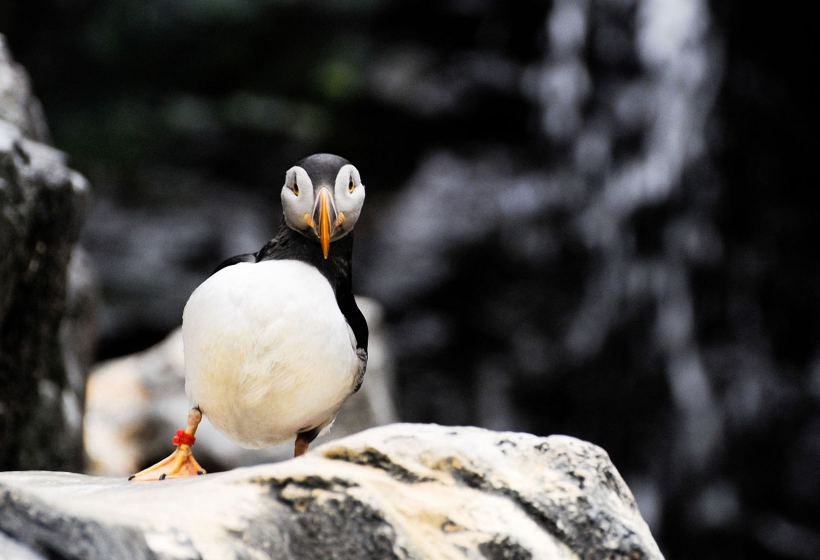Atlantic puffin

Biology
This small sea bird spends most of its life on the open sea, returning to the mainland in the summer to breed. They are monogamous, faithful to their partner for life, they lay only one egg and share tasks between the couple: males maintain the nest and females take care of the incubation and the feeding of the hatchling. Nests are burrows built in the cliffs, protected from terrestrial predators. On the ocean, they spend most of their time taking good care of their feathers, essential to keep their body temperature stable. These birds feed on small fish, crustaceans and molluscs that they can catch on their powerful dives, up to 60 metres deep in the ocean. However, if they are not cautious enough, opportunistic birds such as seagulls may steal their food and destroy their nests.
Conservation
The Atlantic puffin has been hunted by man for several years and is strongly affected by oil spills.
Curiosities
The Atlantic puffin can reach over 7000 kilometres in eight months and fly up to 80 kilometres per hour. It moults during the winter, while at the sea, losing some of its characteristic strong colours. Its flight is elegant; however these birds are very clumsy landing on the water or on the land.
